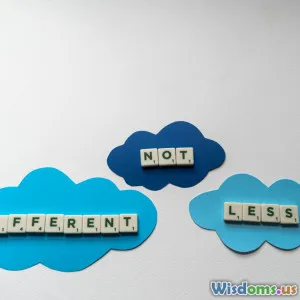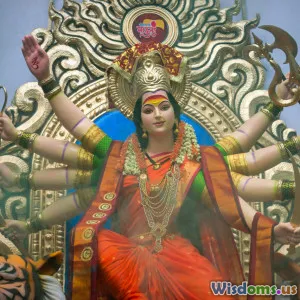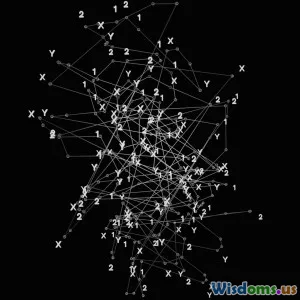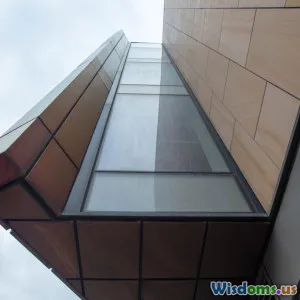
Challenges Modern Freemasonry Faces in the Digital Age
7 min read Explore how Freemasonry navigates secrecy, recruitment, and relevance amid digital age challenges. (0 Reviews)
Challenges Modern Freemasonry Faces in the Digital Age
Freemasonry, one of the world's oldest fraternal organizations, has long captivated the public imagination with its symbols, rituals, and aura of secrecy. Yet, in today's digital era, the traditions and practices that have sustained this centuries-old brotherhood are confronting unprecedented challenges. This article delves into the multifaceted difficulties modern Freemasonry encounters amid rapid technological advancements and shifting cultural landscapes.
The Paradox of Secrecy in an Age of Transparency
At the heart of Freemasonry lies a commitment to privacy and selective disclosure; its rituals, symbols, and proceedings are traditionally shielded from the general public. In the digital age, where information dissemination is instant and ubiquitous, maintaining this veil of secrecy has become remarkably complex.
For instance, platforms like YouTube and social media have democratized knowledge, making Masonic rituals and symbols readily accessible to curious onlookers. According to a Pew Research study from 2021, approximately 72% of adults consume online content via video platforms, increasing visibility of previously obscure subjects.
This transparency challenges Freemasonry’s allure of mystery, which historically helped foster close-knit bonds among members and preserve ceremonious significance. Additionally, unauthorized leaks of internal rites online threaten the organization's intellectual property and its member’s trust. Balancing the need for tradition with openness is a contemporary dilemma.
Recruitment Challenges: Attracting New Members in a Distracted World
Traditionally, Freemasonry thrived on word-of-mouth recruitment within communities and social networks characterized by face-to-face interaction. However, in an era where digital communication often eclipses physical engagement, generating interest among younger generations is difficult.
Surveys reveal that Generation Z and millennials seek transparent, values-driven communities but often lack awareness or harbor misconceptions about Freemasonry. The coded language and symbolism that once fascinated today’s digitally savvy youth can seem antiquated or exclusionary.
Furthermore, competing social platforms offer instantaneous belonging and gratification, whereas Freemasonry requires long-term commitment. Lodges must reconsider outreach approaches, using online presence wisely to invite curiosity without sacrificing core values. Some lodges employ social media campaigns or host virtual open houses, but these efforts must navigate the tension between preserving privacy and boosting visibility.
Relevance and Adaptation in a Changing Social Fabric
The modern world values inclusivity, diversity, and progressive ideals—areas where traditional Freemasonry faces scrutiny, partly because some Masonic bodies historically restricted membership based on race, gender, or religion.
As social awareness rises, there's pressure on Freemasonry to modernize membership policies and reframe its purpose in a way that aligns with contemporary ethics. The United Grand Lodge of England, for example, has made strides promoting inclusivity while upholding Masonic principles.
Moreover, the digital age calls for adaptation in how ceremonies and meetings are conducted. The COVID-19 pandemic accelerated transitions to virtual meetings using platforms like Zoom. While virtual gatherings allow continuity, many members lament the loss of in-person camaraderie and ritual ambiance crucial to the Masonic experience.
Information Security and Privacy Concerns
Ironically, while Freemasonry upholds secrecy, participating in online platforms introduces cybersecurity vulnerabilities. Sensitive member data, communication channels, and proprietary knowledge could be targeted by hackers or malicious actors.
Implementing robust cybersecurity measures is increasingly necessary but costly. Digital literacy among older members may be limited, requiring training and investments in user-friendly but secure technologies.
Opportunities Amid Challenges: Embracing the Digital Realm
Despite these obstacles, the digital age also offers opportunities for revitalization. Online archives, digital libraries of Masonic history, and interactive educational resources can attract enthusiasts worldwide.
In 2019, some lodges launched smartphone apps to facilitate ritual study and inter-lodge communication, fostering connectedness across geographic boundaries. Virtual conferences enable greater accessibility for members who cannot attend physically.
Furthermore, using online platforms to transparently share the organization's charitable efforts helps reshape the public image, emphasizing community impact over secrecy.
Conclusion
Modern Freemasonry stands at a crossroads, challenged by the digital age's demand for openness and immediacy, changing social values, and evolving communication methods. Maintaining the essence of Freemasonry’s timeless traditions while embracing adaptive strategies is vital for its survival and growth.
By thoughtfully navigating secrecy, recruiting new generations, enhancing inclusivity, and leveraging digital tools with caution, Freemasonry can continue to offer a meaningful fraternal experience that resonates in the 21st century and beyond.
As noted by sociologist Dr. Robert L.D. Cooper: "Freemasonry must evolve without losing the mystery that binds its members. The digital age won’t end this brotherhood; it will transform how it endures."
Understanding these challenges invites reflection not only on Freemasonry’s future but also on how ancient institutions in general can coexist with a digital world characterized by rapid change and relentless connectivity.
Rate the Post
User Reviews
Popular Posts





















